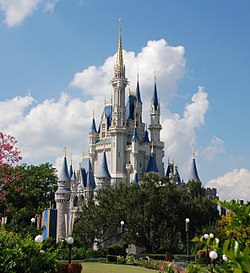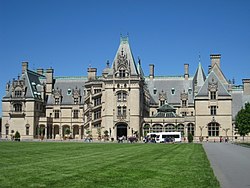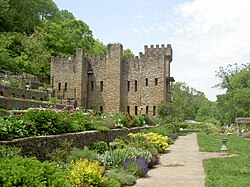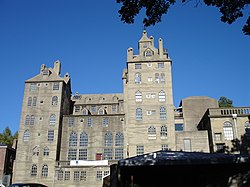This article may be in need of reorganization to comply with Wikipedia's layout guidelines .(September 2021) |

This is a list of castles in the United States . None can properly be described as true castles, as there was no medieval period in the Western Hemisphere comparable to that in Europe. Castles were obsolete by the time of European settlement. They are primarily country houses, follies, or other types of buildings built to give the appearance of a castle. They are usually designed in the Gothic Revival, Châteauesque, Romanesque Revival, Scots Baronial or Tudor Revival styles. Some, however, are actual fortifications. This list includes items in many states.




































